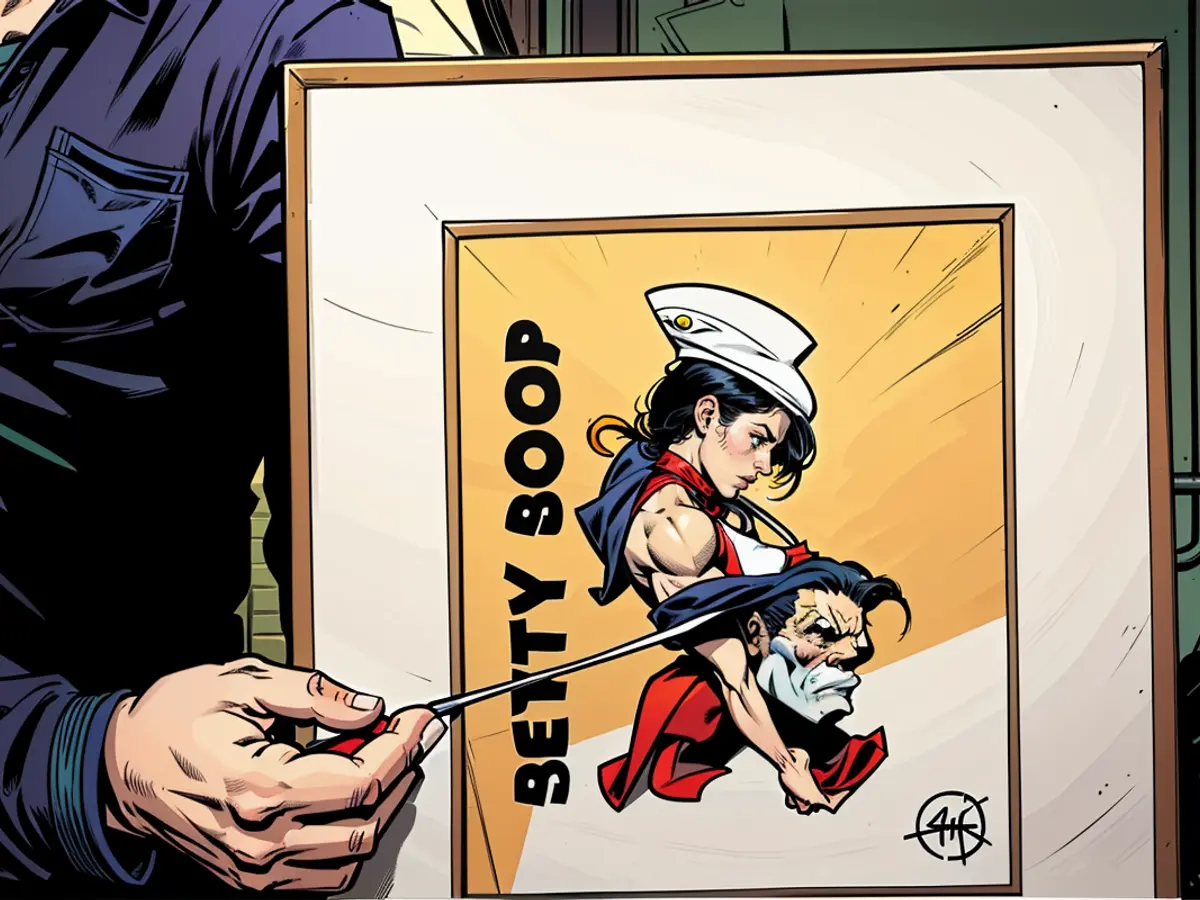- Passionate Professional Feels Aroused by Popular Female Star, Yet She Ultimately Withdraws from the Situation.
Popular comedian Doreen Gericke and her companion, Betty Boop, paid a visit to the Pulheim steelworks. The 48-year-old educator from Berlin was wanting to sell a Betty Boop print she'd brought back from America two decades prior at "Bares für Rares." Her main objective was to gather the expert's opinion, as she had no clue about the print's value.
Detlev Kümmel, the knowledgeable expert, could certainly provide answers. He kicked off by discussing the print's content: A depiction of Betty Boop with her canine companion Bimbo, two iconic characters created by Fleischer Studios in 1930 that graced the silver screen the same year.
Detlev Kümmel hailed Betty Boop as a trailblazing figure of her time. Initially, she bore resemblance to a hybrid canine-human creature, with elements of a poodle and a woman. It wasn't until 1932 that her appearance transitioned into the familiar form we know today.
The "Hays Code" and Betty Boop's Fall
From a cultural perspective, Betty Boop carried immense influence. "She essentially represented the first animated character to openly express her sexuality," Kümmel explained. In comparison, Minnie Mouse, a character from Disney Studios, was genderless and only distinguishable as a woman due to her attire. In Fleischer Studios' films, they challenged and exploited Betty Boop's sexual identity with suggestive details such as her garter belt sliding down or her skirt riding up. Betty Boop functioned as a sort of "it-girl" of her time.
Unfortunately, Betty Boop's success came to a sudden halt in 1934 due to the "Hays Code": new moral guidelines that regulated acceptable depictions of crime and sexuality. Skirts lengthened, and Bimbo disappeared, making it impossible for a woman to maintain a relationship with her canine companion.
The crowd, including Horst Lichter and the dealer, listened intently to Kümmel's lecture. However, the expert delivered unfortunate news to Gericke: The print was manufactured in 1989.
This revelation was a tough pill to swallow for the dealer, who had hoped the print would fetch at least €800. Regretfully, that wasn't feasible. Kümmel valued the print at only €100, a price Gericke refused to accept. The print was returned to its long-term home – her mother's apartment.
At least her mother would be pleased.
Also Read:
- A Ferrari Poster Signed by Schumi Kicks Off Bidding War
- Ruhrpottler's Unique Artifact: Bust Auctioned for Beer and Sausages
- Cousins Celebrate Bidding War Victory Over Ceramic Dancers
Doreen Gericke was disappointed to learn that her Betty Boop print, which she aimed to sell at "Bares für Rares" for cash, was produced in 1989, reducing its potential value significantly. Despite this, she decided to keep the treasure in her mother's apartment.
Determined to sell her Betty Boop print and looking for expert advice, Gericke took her rare collectible to "Bares für Rares," hoping to get a good price for it, especially for a print depicting the famous character in her iconic form.








